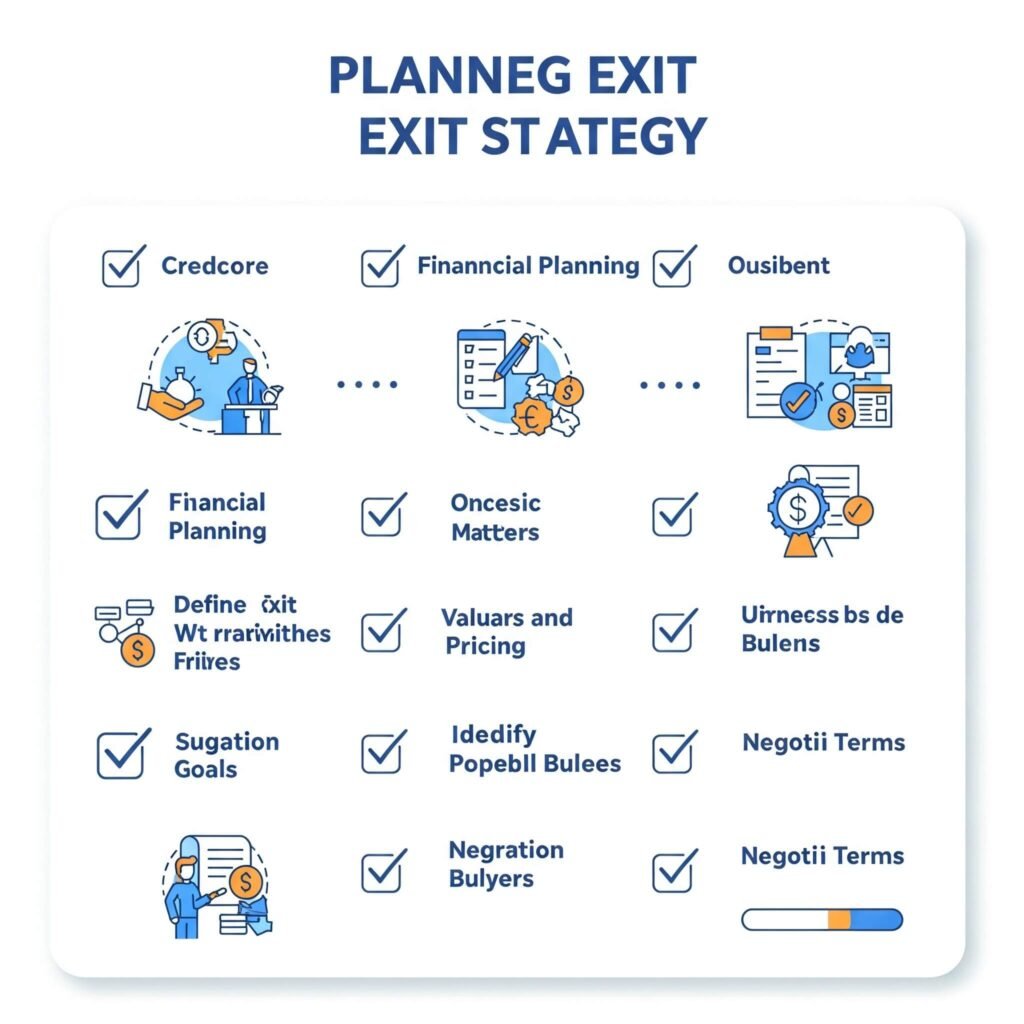You’ve poured your heart, soul, and countless hours into building your startup. But have you considered the endgame? Surprisingly, one of the most crucial aspects of a successful startup journey is planning your startup exit strategy right from the very beginning. It might seem counterintuitive to think about leaving when you’re just starting, but trust me, it’s the key to maximizing your returns and ensuring a smooth transition when the time comes.
Why Your Startup Exit Strategy Matters from the Outset
Thinking about your startup exit strategy early isn’t about being pessimistic; it’s about being strategic. It influences every major decision you make, from product development and market positioning to fundraising and team building.
- Attracting Investors: Investors want to see a clear path to profitability and a potential return on their investment. A well-defined startup exit strategy demonstrates foresight and increases their confidence.
- Guiding Growth: Knowing your potential exit options helps you focus your efforts on building a business that is attractive to potential acquirers or suitable for an IPO.
- Maximizing Value: By building with an exit in mind, you can make choices that enhance the long-term value and attractiveness of your company.
- Ensuring a Smooth Transition: When the time comes to exit, having a plan in place makes the process less stressful and more efficient for everyone involved.

Key Startup Exit Strategies to Consider
Understanding the different types of exits is crucial for planning your startup exit strategy. Here are some common options:
Acquisition: A Common Startup Exit Strategy
Acquisition involves selling your company to another, often larger, company. This is a frequent exit strategies for startups, offering founders and investors a significant payout.
- Strategic Acquisition: The acquiring company buys your startup to gain access to your technology, talent, or market share.
- Financial Acquisition: A private equity firm or another financial buyer acquires your company, often with the goal of restructuring and selling it later.
Initial Public Offering (IPO): Taking Your Startup Public
An IPO is the process of offering shares of your company to the public for the first time. This exit strategies for startup can generate significant capital but also comes with increased regulatory scrutiny and reporting requirements.
Management Buyout (MBO): Selling to Your Team
In an MBO, the existing management team purchases the company. This can be a good option if the team is capable and has a strong vision for the future.
Merger: Combining Forces for a Startup Exit
A merger involves combining your company with another company to create a new entity. This startup exit strategy can lead to synergies and increased market power.

Planning Your Startup Exit Strategy from Day One: Actionable Steps
Integrating your startup exit strategy into your early planning doesn’t require a crystal ball. It’s about building a strong foundation and staying adaptable.
- Define Your Vision: What do you ultimately want to achieve with your startup? Understanding your long-term goals will inform your exit strategy.
- Identify Potential Acquirers Early: Research companies that might be interested in your space or technology down the line. This can influence your product development and market focus.
- Build a Scalable and Sustainable Business: Focus on creating a business model that can grow and generate consistent revenue. This is attractive to potential buyers.
- Focus on Key Metrics: Track and improve metrics that are important to investors and acquirers, such as customer acquisition cost (CAC), churn rate, and revenue growth.
- Maintain Clean Financials: Accurate and transparent financial records are essential for any exit process.
- Build a Strong Team: A talented and dedicated team is a valuable asset for any acquiring company.
- Seek Legal and Financial Advice: Engage with experienced advisors early on to understand the legal and financial implications of different exit strategies.
- Stay Flexible: The market landscape can change rapidly. Be prepared to adapt your startup exit strategy as your business evolves.


